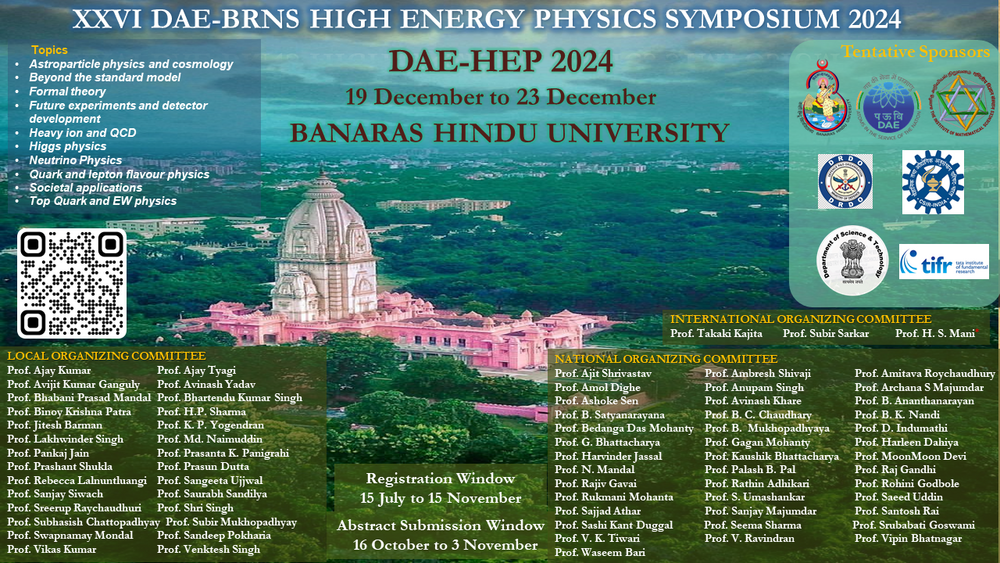Speaker
Description
The phenomenon of the neutrino oscillations has established that at least two neutrinos possess non-zero masses, which necessarily leads to the existence of the flavor violation in charged lepton sector. The relationship among branching ratios of different charged lepton flavor-violating (CLFV) decay modes is closely tied to the specific characteristics of the underlying neutrino mass model. In this study, we examine the three fundamental types of seesaw mechanisms for neutrino masses, which emerge from the ultraviolet (UV) completion of the unique dimension-5 Weinberg operator, and investigate the correlations between radiative CLFV decays and meson-induced CLFV decays.
Our findings reveal that, within the type-II seesaw mechanism, the branching ratios for meson CLFV decays are negligibly small. Conversely, in the type-I (type-III) seesaw mechanism, meson CLFV decay branching ratios are constrained to be at least three (two) orders of magnitude lower than those for radiative CLFV decays. Analyzing the relationships between these two CLFV decay channels offers valuable insights into distinguishing among different seesaw mechanisms. Notably, if the branching ratios for CLFV decays in mesons exceed those for radiative CLFV decays, it strongly suggests that the mechanism responsible for neutrino mass generation may involve a more complex structure than the simple seesaw framework.
| Field of contribution | Phenomenology |
|---|

